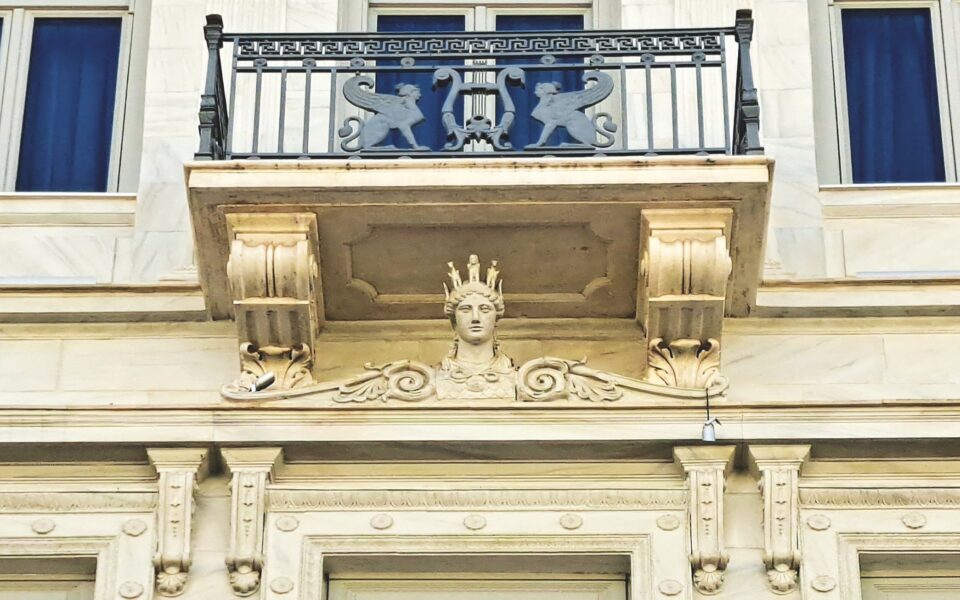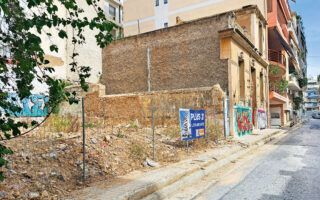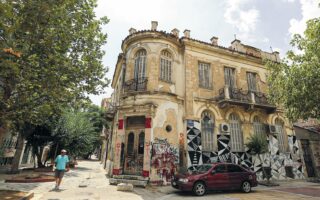The goddess Athena on Athinaidos Street

Like a cut in the Athenian fabric, there’s a narrow street stretching from Syntagma Square to Athinas Street that changes name four times along the way: From Karagiorgi Servias to Perikleous after crossing Lekka, to Athinaidos after Evangelistrias, and then to Agias Irinis on the last leg, after Aiolou Street.
So narrow and densely packed, you can only walk along it by hopping on and off the sidewalk into the road. But as you approach Agia Irini Square, the church after which it is named rises through the din to remind us where we are, like a compass of historical orientation, pointing to the enduring beyond the fleeting.
There, near Agia Irini, there’s a bust of Athena on one of the loveliest facades representing her city in a bygone era. You will see the goddess on the front of 10 Athinaidos, just before Aiolou. She looks out onto the square and is the centerpiece of what is probably the most beautiful neoclassical building in this area, now home to a hotel. I always raise my gaze to Athena when I’m passing. And she is a rare kind of Athena, different from the one at the Athens Academy or at the old Arsakeio School, which now houses the Council of State, the country’s highest administrative court.
This Athena is inspired by the “Varvakeion Athena,” so called, without any scientific basis, after being discovered near the old (and now forever lost) Varvakeio School on Athinas Street, in 1880. That Athena, now a part of the collection of the National Archaeological Museum of Athens, wears a helmet adorned with horses. Here, on the Athinaidos Street facade, we see an adaptation of that theme, in a loose and touching “dialogue” with the city’s historic underpinnings.
It would be an interesting study to collect all the different types of Athenas and other deities as they are portrayed in sundry forms on Athens’ buildings, as folk art, as a response to the intellectual and innate need to remember and connect.
Beneath a balcony with sphinxes and a lyre, the Athena on Athinaidos Street tells us a story about Athens’ urban transformation in the late 19th and early 20th century, a time when social mobility and economic freedom were changing the world. Built by the second generation of Athenian homeowners during the city’s Belle Epoque, in enhanced form, it was lavishly adorned and built almost like a local palazzo.
And behind this lovely facade is the story of Themistoklis Michalopoulos, the son of a silk merchant from Sparta and the daughter of a Greek War of Independence fighter. It appears from historical research, moreover, that Michalopoulos was a particularly well-cultivated man. In fact, he wrote the Modern Greek Alphabet Book in 1892 and a book on the importance of expanding the scope of public education in 1905, as well as tutoring the young kings Georgios II and Alexandros. He also served as an MP for the Attica-Viotia region.
So, if anything, that goddess Athena on Athinaidos Street reminds us of the stories buried between layers of memory and oblivion.





